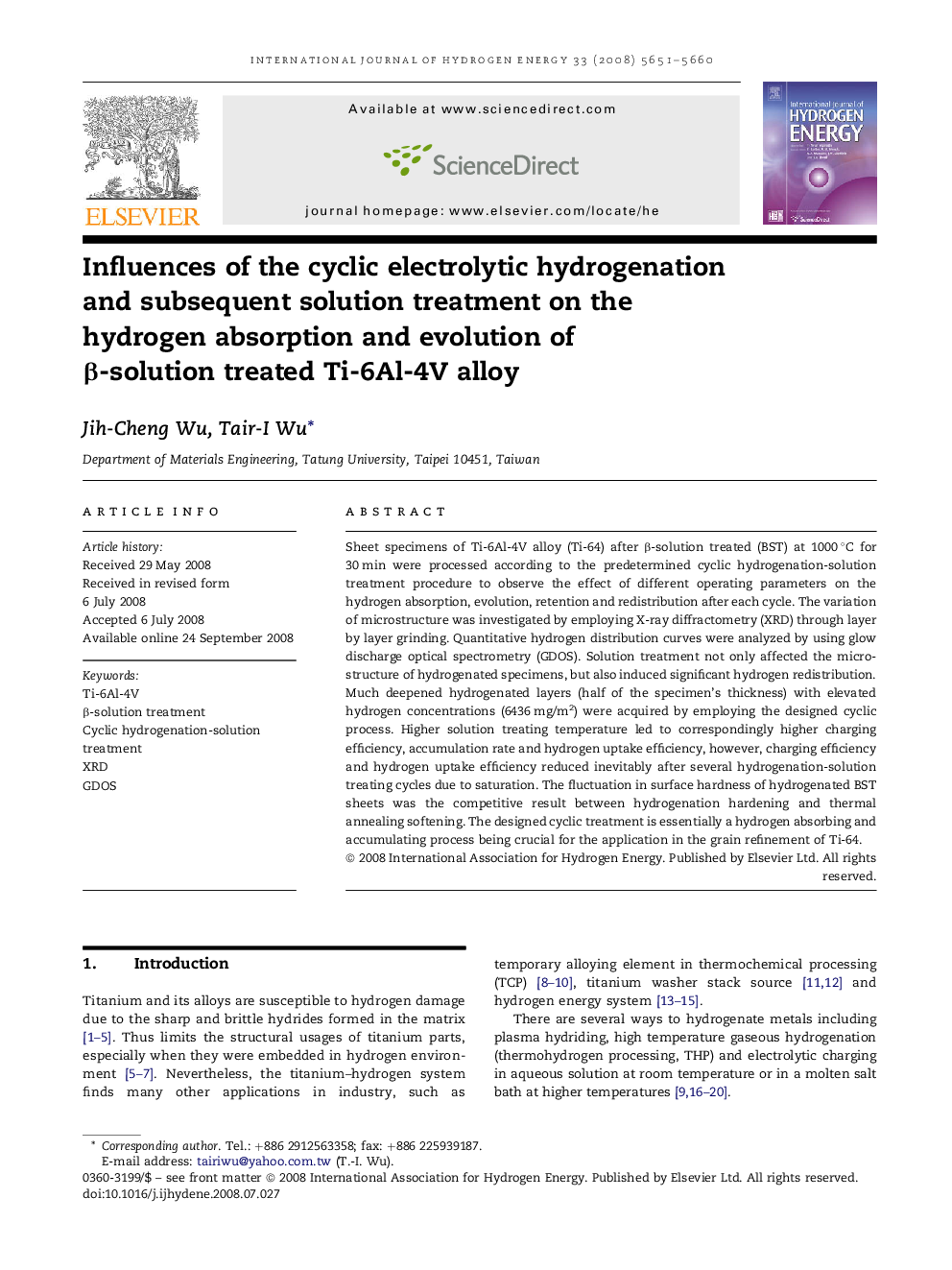| Article ID | Journal | Published Year | Pages | File Type |
|---|---|---|---|---|
| 1278505 | International Journal of Hydrogen Energy | 2008 | 10 Pages |
Sheet specimens of Ti-6Al-4V alloy (Ti-64) after β-solution treated (BST) at 1000 °C for 30 min were processed according to the predetermined cyclic hydrogenation-solution treatment procedure to observe the effect of different operating parameters on the hydrogen absorption, evolution, retention and redistribution after each cycle. The variation of microstructure was investigated by employing X-ray diffractometry (XRD) through layer by layer grinding. Quantitative hydrogen distribution curves were analyzed by using glow discharge optical spectrometry (GDOS). Solution treatment not only affected the microstructure of hydrogenated specimens, but also induced significant hydrogen redistribution. Much deepened hydrogenated layers (half of the specimen's thickness) with elevated hydrogen concentrations (6436 mg/m2) were acquired by employing the designed cyclic process. Higher solution treating temperature led to correspondingly higher charging efficiency, accumulation rate and hydrogen uptake efficiency, however, charging efficiency and hydrogen uptake efficiency reduced inevitably after several hydrogenation-solution treating cycles due to saturation. The fluctuation in surface hardness of hydrogenated BST sheets was the competitive result between hydrogenation hardening and thermal annealing softening. The designed cyclic treatment is essentially a hydrogen absorbing and accumulating process being crucial for the application in the grain refinement of Ti-64.
